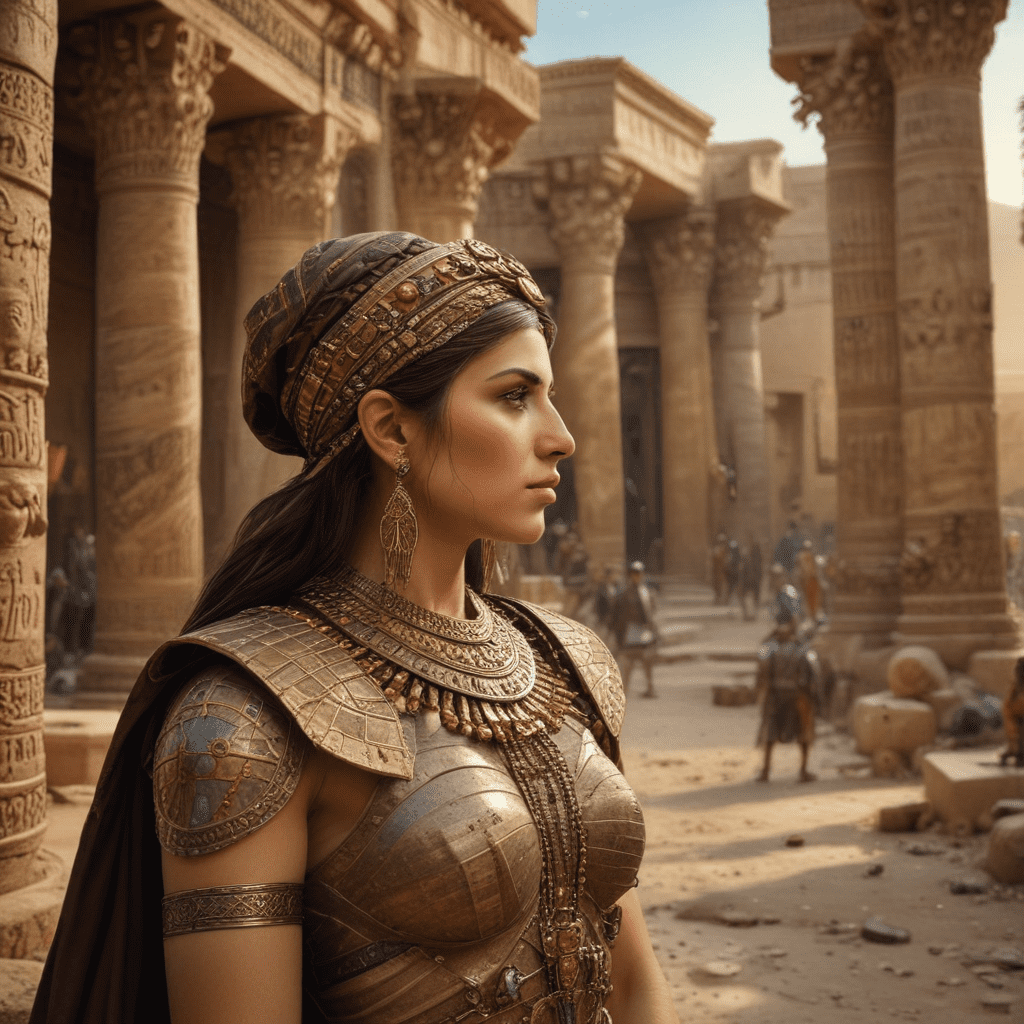The Enduring Legacy of Mesopotamian Mythology
Mesopotamian mythology, born amidst the fertile plains of ancient Mesopotamia, boasts a rich tapestry of myths, legends, and creation stories that have transcended millennia. This legacy continues to resonate in modern literature, art, and culture, shaping our understanding of the world and ourselves.
Modern Literature: Echoes of Ancient Tales
Mesopotamian mythology has profoundly influenced modern literature, providing inspiration and themes that continue to captivate readers.
Gilgamesh: A Literary Archetype
The Epic of Gilgamesh, arguably the world's oldest surviving literary work, tells the tale of a legendary king's quest for immortality. This epic has served as a touchstone for authors like J.R.R. Tolkien, whose Lord of the Rings echoes themes of mortality and the search for meaning. Gilgamesh's character, a complex blend of heroism and hubris, continues to inspire writers to explore the depths of human nature.
The Flood Narrative: From Tablet to Screen
The Mesopotamian flood myth, recounted in the Epic of Gilgamesh and other texts, finds striking parallels in the biblical story of Noah's Ark. This enduring narrative has been reinterpreted and adapted in countless works of literature, from John Milton's Paradise Lost to modern disaster films. The flood serves as a potent symbol of destruction and renewal, reminding us of humanity's vulnerability and resilience.
Ishtar's Descent: Inspiring Feminist Rewritings
The myth of Ishtar's descent into the underworld, a tale of power, loss, and resurrection, has resonated with feminist writers who have reinterpreted this goddess as a symbol of female empowerment. Works like Marge Piercy's "The High King" and Sylvia Plath's "Lady Lazarus" draw inspiration from Ishtar's journey, offering fresh perspectives on female agency and resilience.
Artistic Inspiration: Across the Canvas of Time
Mesopotamian mythology's influence extends beyond literature, gracing canvases, sculptures, and even modern architecture.
From Ziggurats to Skyscrapers: Architectural Echoes
The towering ziggurats, Mesopotamian temples dedicated to their deities, have inspired modern architects like Frank Lloyd Wright. Wright's "skyscraper temples," such as the Price Tower in Bartlesville, Oklahoma, echo the ziggurats' stepped structure, paying homage to ancient Mesopotamian design.
Mythological Motifs in Modern Art
Mesopotamian artistic motifs, like the winged bull and the Tree of Life, have found new life in modern art. Surrealist painter Salvador Dali incorporated the winged bull into his iconic work "The Persistence of Memory," while the Tree of Life continues to be a popular motif in contemporary art, symbolizing growth, connectivity, and the interconnectedness of all living things.
Decoding Mesopotamian Influence in Film and Animation
Mesopotamian mythology's epic tales and fantastical creatures have captivated filmmakers and animators. Films like "Clash of the Titans" and "Immortals" draw heavily from Mesopotamian myths, while animated films like "Sinbad: Legend of the Seven Seas" feature characters and creatures inspired by Mesopotamian legends.
Cultural Impact: Shaping Beliefs and Values
Mesopotamian myths have profoundly shaped our understanding of morality, creation, and governance.
Mesopotamian Ethics and Modern Morality
Mesopotamian ethical codes, like the Code of Hammurabi, laid the groundwork for modern legal systems and concepts of justice. These ancient codes emphasized fairness, proportionality, and the protection of the weak, influencing modern notions of due process and the rule of law.
The Legacy of Creation Myths
Mesopotamian creation myths, such as the Enuma Elish, explored themes of chaos, order, and the origin of the universe. These stories have influenced religious beliefs and continue to spark philosophical discussions about the nature of existence.
Mythology and the Development of Law and Governance
Mesopotamian legal and political systems, shaped by their mythology, emphasized divine authority and emphasized justice and order. These concepts influenced the development of governance structures and legal systems in subsequent civilizations, leaving a lasting legacy on modern political thought and institutions.
Theories and Interpretations: Unraveling the Past
Mesopotamian mythology continues to be a rich source of scholarly inquiry, inspiring diverse interpretations and analyses.
Mythology as Historical Record
Scholars debate the extent to which Mesopotamian myths reflect historical events. Some see these stories as allegorical representations of real events, while others view them as purely fictional narratives. Regardless, Mesopotamian myths provide valuable insights into the society's beliefs, values, and worldview.
Psychological and Archetypal Interpretations
Psychologists and anthropologists have analyzed Mesopotamian myths through the lens of archetypes, universal patterns of human behavior and thought. Carl Jung, for instance, saw Mesopotamian deities and heroes as embodiments of archetypes like the hero, the trickster, and the mother goddess.
The Feminist Lens on Mesopotamian Myths
Feminist scholars have reinterpreted Mesopotamian myths to uncover the roles and representations of women in ancient society. They analyze goddesses like Ishtar and Inanna, challenging traditional interpretations and highlighting the agency and power of female figures in Mesopotamian mythology.
Conclusion: A Timeless Legacy
Mesopotamian mythology, a testament to the human imagination, continues to resonate with us today, shaping our literature, art, and cultural values. From epic heroes like Gilgamesh to powerful goddesses like Ishtar, from the grandeur of ziggurats to the echoes of ancient tales in modern films, the legacy of Mesopotamia lives on, reminding us of the enduring power of stories to connect us to our past and inspire our future.
FAQ:
What is the most famous Mesopotamian myth?
The Epic of Gilgamesh is arguably the most famous Mesopotamian myth. It tells the story of a legendary king who searches for immortality.
What is the main theme of Mesopotamian mythology?
Mesopotamian mythology explores themes of creation, order, chaos, justice, humanity's place in the universe, and the search for meaning.
How has Mesopotamian mythology influenced modern culture?
Mesopotamian mythology has influenced modern literature, art, film, architecture, and legal systems. Its stories and motifs continue to inspire and shape our understanding of the world.
How do scholars interpret Mesopotamian mythology?
Scholars interpret Mesopotamian mythology through various lenses, including historical, psychological, archetypal, and feminist perspectives. These diverse approaches provide insights into the myths' meanings, significance, and relevance to our understanding of ancient Mesopotamian society and its enduring legacy.




